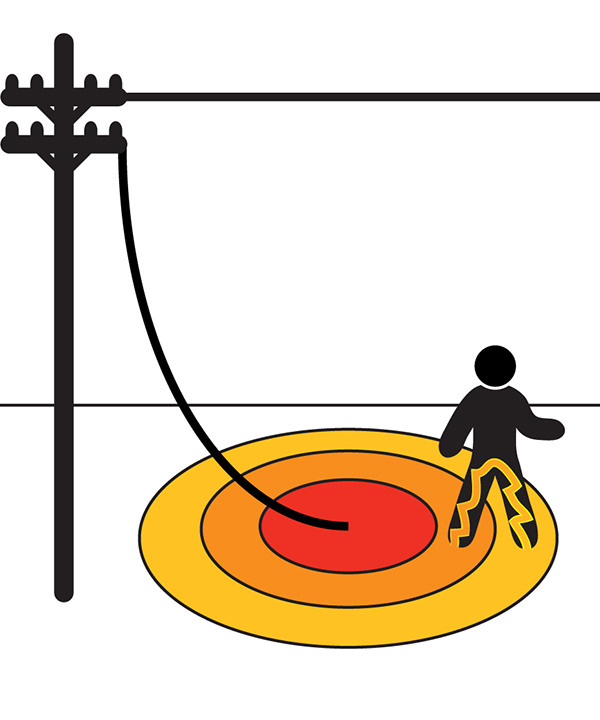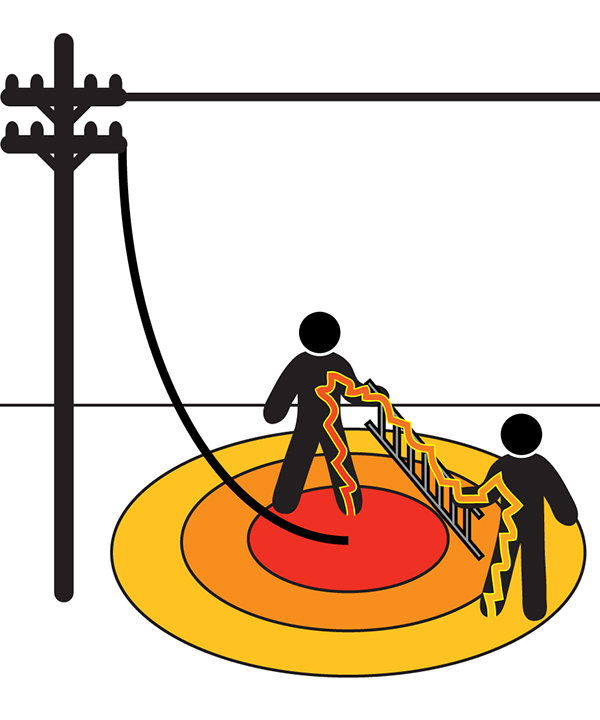|
Did you know that you could get a serious shock without directly touching an electrical hazard? You can, in fact, be injured—or even killed—by electricity that flows into the ground from a downed power line or other source. Here’s how it happens:
- When a downed power line or energized object contacts the earth, it transmits electrical current into the ground. If the voltage is strong enough, electricity spreads out in the ground in what is known as a voltage gradient. The voltage will be highest at the point of contact and will diminish with distance from that point.
- If you step across two areas of different voltage, the voltage between your feet will vary; this difference is known as step potential. Because electricity seeks to move from a high-voltage source to a lower-voltage area until the voltage is equalized, electric current will use your legs as a path to move from a higher to lower voltage zone.

- Step potential can also affect two people carrying a long conductive object, such as a metal ladder. As both people step across a voltage gradient, electricity can flow up through one person’s legs, across the object and down through the other person’s legs.

If a power line comes down on your job site, move away from the line with small, shuffling steps. Keep your feet close together, and do not allow your heels to pass your toes. Keep your feet in contact with the ground at all times, and do NOT take large steps. Shuffling in this way will ensure your legs do not span a voltage gradient. Immediately call 911 and Duke Energy to report the downed line.
A downed power line is the most common source of step potential. But a damaged heavy-duty extension cord or faulty electrical equipment can also create a step potential hazard. Before you start work each day, check the insulation on all cords, tools and equipment, and do not use any that show signs of wear.
Additional digging and overhead guidelines, case studies, instructional videos and training tools can all be found, at no charge to you, on Duke Energy’s e-SMARTworkers website.
Do you like this email series? Do you find the information helpful? We would like to know. Please reply to this email and tell us what you think, or let us know what topics you’d like to see in future emails.
|



